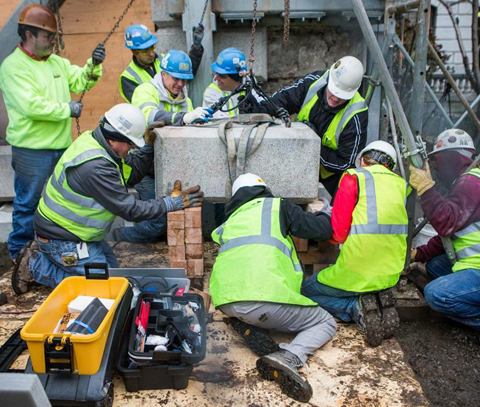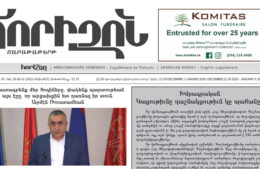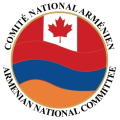Book in Boston time capsule seen as a call to remember the Armenian Genocide
- (0)
Book in Boston time capsule seen as a call to remember the Armenian Genocide –

Photo by Aram Boghosuan/The Boston Globe
Peter Schworm
The Boston Globe
When the Old State House’s century-old time capsule was opened last fall, the red hardback book found inside, a routine government report, was dismissed as a mere space-filler.
Now it appears that the book’s curious inclusion was anything but an afterthought. With a corner carefully folded on a page that describes an attack agsaint Armenians by Ottoman Turks, the volume is seen as delivering a message, a call to remember from the distant past.
It was an Armenian coppersmith, Moses Gulesian, who was commissioned in 1900 to replace the wood figures of a lion and unicorn on the east facade of the building. When his work was completed, he placed the time capsule — a copper box filled with letters, photographs, and newspaper articles from the time — inside the lion’s head.
“One of the last things he did was to seal a copper box,” reported a Boston Daily Globe article from 1901.
But not before he placed the thick tome inside, nestled snugly atop the other objects as if it had been cut to size. When the capsule was opened, the book, which contained a summary of US foreign relations from 1896, was the first item seen.
Yet, the reason for such a prominent placement remained unclear. Officials at the Bostonian Society, which operates the Old State House Museum, were eager for answers, but the book’s broad scope defied them.
“It was a mystery,” said Elizabeth Roscio, the society’s archivist.
When Don and Barbara Tellalian, a couple from Newton who had researched Gulesian’s life, heard about the book, they quickly made the connection.
Gulesian was a leading figure in the Friends of Armenia, a Boston group that raised awareness about the Armenian massacres. And the book provided a historical record of attacks against Christian minorities that began in 1895.
“From his point of view, it made perfect sense to include,” said Barbara Tellalian. “It just seemed to fit.”
Don Tellalian, a retired architect who had worked on the restoration of the Old State House, set up a meeting with Roscio in October to examine the book. As he thumbed through the section about the Ottoman Empire, they came across the folded page, a cleanly pressed triangle marking page 887. The section describes an attack by Turkish forces on an American mission in an Armenian province.
“There can be no doubt I think, judging from the penetrating force of the bullets, that they were fired from rifles such as are used by the Turkish troops,” a diplomatic letter read.
In a revelatory moment, the Tellalians concluded that the book was Gulesian’s way of preserving a piece of history, to mark a moment in time for future generations. What had first seemed to be a dull, bureaucratic selection was instead a deeply personal choice to document the atrocities against his homeland, they decided.
“We knew then,” Barbara Tellalian said. “This was a passion for him.”
Gulesian was 17 when he came to the United States, arriving in New York City in 1883. He slept on a park bench before a fellow countryman put him to work at his carpet shop.
In 1890, he built a copperworks factory in Boston, and in the coming years took in scores of Armenian refugees.
He is best remembered for rallying support to save the USS Constitution from being scrapped by offering to pay the Navy $10,000 for the vessel.


















